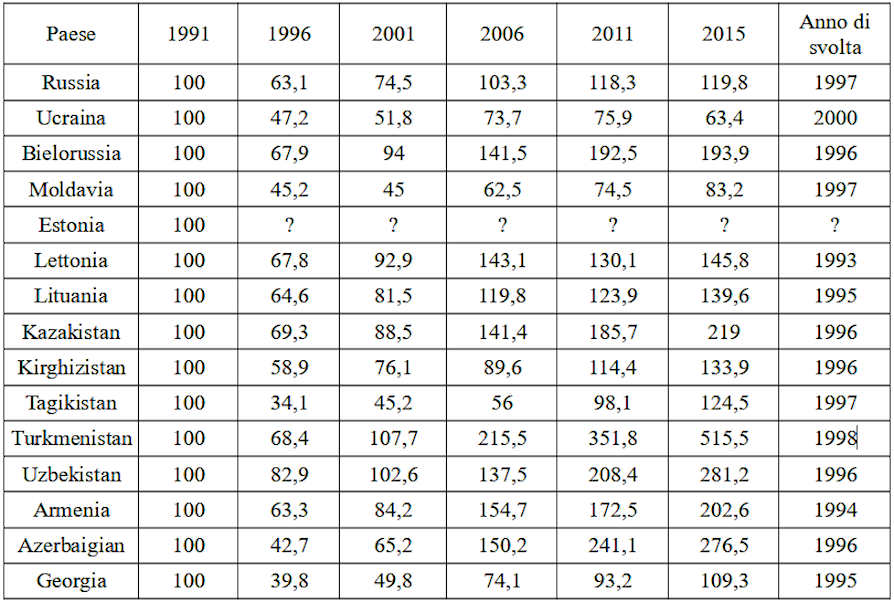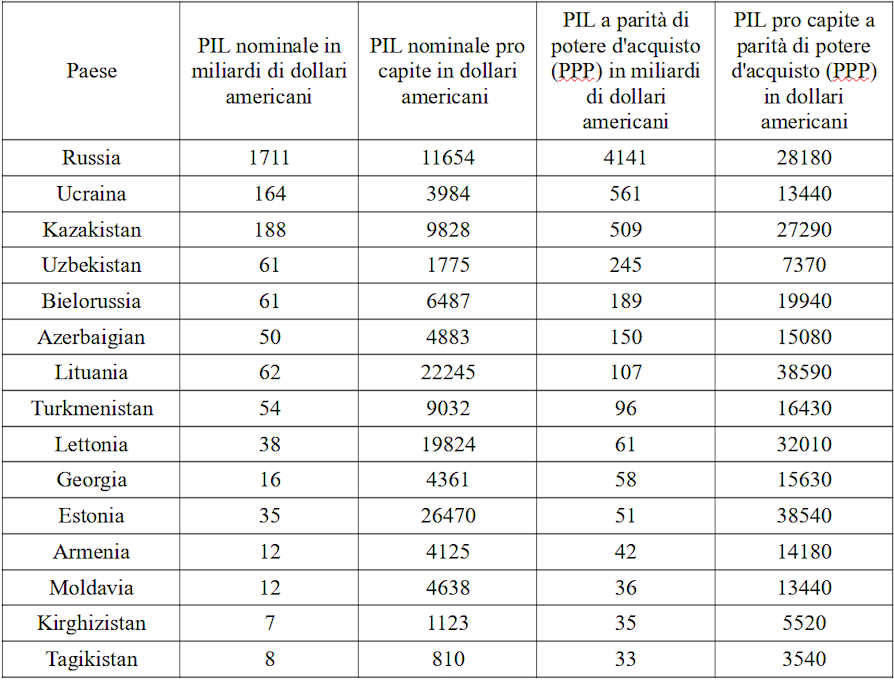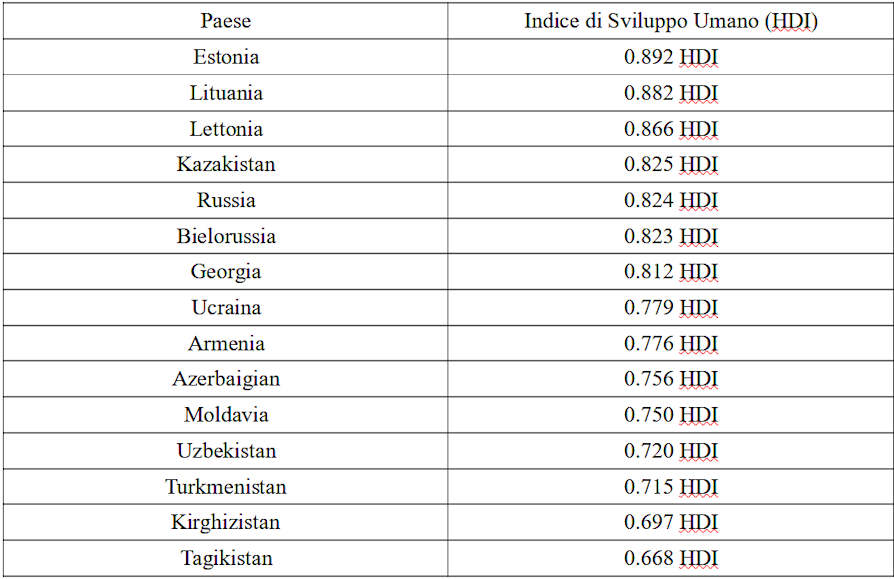For 8 years now, since Ukraine was affected by that political-ideological pestilence known to all as "Euromaidan", the world of information (and disinformation) does not matter whether on TV, in print or online, he bombarded us with news propagated by the most unlikely individuals (from this point of view Facebook represents a sample that I would dare to call hilarious!) who have made efforts, which to describe as "heroic" is an understatement, aimed at hammering into our collective conscience the axiom that: "Russia is the cause of all the misfortunes that have befallen Ukraine!".
With the arrival of Euromaidan's anniversary, and while the war drums are now echoing with ever greater clamor in the lands of Eastern Europe, I have decided in my small way that the time has come to say "enough" and put for writing down the (many) reasons why Ukraine is in a very delicate situation (and none of them has anything to do with Russia). I know very well that this writing will be particularly unpleasant but being convinced of the goodness of my tools of analysis as well as of the universal value of "reasoning", I also try this difficult proof, sure of the fact that the Truth (the one with a capital V) it does not need translations.
Ukraine's inability to find its own path of autonomous development appears evident if we analyze its evolution (or perhaps it would be better to call it "involution") at an economic and demographic-social level from independence to today, comparing it with what occurred in other post-Soviet countries which, coming from a comparable historical-economic trajectory, represent excellent terms of comparison. Let us now observe the following table which represents the change in the level of GDP at constant prices in all post-Soviet countries from 1991 to 2015 starting from the data provided by the World Bank:

By carefully observing the data of each country, except those of Estonia which are not available (but which intuitively should not differ so much from those of the other Baltic countries) you can see a whole series of interesting details.
First of all, set at 100 the level of GDP that all ex-Soviet republics had in 1991, the last year of existence of the "Great Empire" (but let's not forget to keep in mind that 1991 was not the year more prosperous than the Soviet economy, given that this threshold was reached in 1988 and in the following 3 years the economy of the USSR entered a phase of protracted crisis!), in the early 90s all the economies of the "successor states" suffered notable losses caused by the dramatic changes that occurred during that period.
Indeed, despite the situation, some countries managed to restart a new cycle of economic growth already in the first half of the 90s, as is the case, for example, of the three Baltic Republics, Armenia and Georgia, while the majority some of the others were able to join the leading group during the second half of the 90s. The reason for this trend must be sought in the performance of the Russian economy. In fact, although economic integration in the ex-Soviet space has been shattered with the loss of the great "common market" constituted by the enormous unified country, still today the Russian economy, in one way or another, acts as a magnet for the economies of the other "sister republics" so when Russia grows economically the other post-Soviet countries do so too, while when the Russian economy suffers, the unease rapidly expands to the other "soyuzniki", as we have seen, for example during the great crisis of 2014 following the events of Euromaidan, Crimea and Donbass. That is why when the Russian economy began to grow strongly again in 1996-97, as many as 8 of the other republics followed closely.
The notable exception was Ukraine's economy, which only started to grow again from the year 2000. To get an idea of the country's economic decline in the period between 1991 and 2000 it would be enough to take a look at the data provided by the International Monetary Fund, the World Bank and the Ukrainian government itself which attest to "economic growth" (to put it mildly) as follows:
- -1992: -9,9%;
- -1993: -14,2%;
- -1994: -22,9%;
- -1995: -12,2%;
- -1996: -10%;
- -1997: -3%;
- -1998: -1,9%
- -1999: -0,2%
This long phase of economic decline was followed by another characterized by a good expansion, however, damaged by the world crisis following the collapse of Wall Street (the famous mortgage crisis sub prime) and a subsequent stagnation due to the contradictory economic policies of the then president Viktor Yanukovych:
- 2000: + 5,9%;
- 2001: + 8,8%;
- 2002: + 5,3%;
- 2003: + 9,5%;
- 2004: + 11,8%;
- 2005: + 3,1%;
- 2006: + 7,6%;
- 2007: + 8,2%;
- 2008: + 2,2%;
- 2009: -15,1%;
- 2010: + 4,1%;
- 2011: + 5,4%;
- 2012: + 0,2%;
- 2013: -0,0%;
Having to express a long-term judgment on the performance of the Ukrainian economy it can be said that, apart from a particularly happy period between 2000 and 2008, the great crisis that lasted between 1992 and 1999, the crisis of 2009 and the subsequent stagnation irreparably damaged the country's capabilities and laid the foundations for the explosion of discontent that later caused the Euromaidan protests.
Even more incredible, as can be seen from the first table published above, Ukraine is still today, together with Moldova, one of the only two post-Soviet countries that thirty years later have not yet managed to reach the same level. of GDP they had in 1991, the last year of their stay in the USSR, and this even considering the fact that Ukraine has on the cards a whole series of components that could place it on the same level as the economies of other large European countries such as: very fertile lands, a developed industrial base, a comparatively skilled workforce and a good school and university system.
By consulting the data provided by the International Monetary Fund relating to both nominal and purchasing power parity (PPP) levels of GDP both nationally and per capita for the year 2021, we realize that, although on paper the Ukrainian is still the second economy of the ex-Soviet area with a national GDP at purchasing power parity (PPP) equal to 561 billion dollars, if we instead measure GDP per capita at purchasing power parity (PPP), with 13.440 dollars per year, the Ukrainians occupy the fourth position among the poorest peoples of the former USSR together with the Moldovans, surpassing only Uzbeks, Kyrgyzs and Tajiks, but in turn being overtaken by Georgians and even by Armenians who live in certainly not famous countries for their amenities.

If we further raise the bar of comparison by analyzing all the countries of the European continent and excluding those post-Soviet countries that are not part of the aforementioned continent, we would discover that the Ukrainians and their Moldovan neighbors are the poorest inhabitants of Europe, surpassed even by the Albanians, Bosnians, Serbs, Macedonians and Kosovars.
As evidence of the fact that the new course of Euromaidan with the consequent destruction of privileged economic relations with Russia and the opening of "new relations with European countries" has not led to the desired results, it is enough to analyze the economic performance of recent years since 2014 to present:
- 2014: -6,8%;
- 2015: -12%;
- 2016: + 2,3%;
- 2017: + 2,5%;
- 2018: + 3,5%;
- 2019: + 3,2%;
- 2020: -4,4%
- 2021: + 3,4%
Going now to resume all the data relating to the thirty-year-olds, we would discover that, on the whole, from 1992 to today, the economy of Ukraine has "grown" at a rate of -0,8% annually and that the GDP of Ukraine today it is 74,4% of what it had in 1991, the last year of life of Soviet Ukraine.
Certainly some might argue that the performance of the economy alone is not enough to say whether a country can truly consider itself a success or a failure and that it is necessary to adopt a "broader perspective". Accepting this criticism, I now want to present the numbers relating toHuman Development Index (HDI) of all post-Soviet countries for the year 2020. For the uninitiated, theHuman Development Index it is an index which, through the analysis of a series of coefficients, makes it possible to unify the data relating not only to wealth, but also to health and education, comparing them between countries for a certain period of time. The result is that, with an HDI of 0,779, Ukraine ranks only in eighth place among the post-Soviet countries, being overtaken by Estonia, Lithuania, Latvia, Kazakhstan, Russia, Belarus and Georgia and being closely followed by close from Armenia which in the next 5 years should be able to overcome it.
Having the author of the present analysis a knowledge of Armenia that is well above the average, the prospect that Ukraine will soon be overtaken by Armenia in the ranking ofHuman Development Index it can only mean bad, very bad for me, especially considering how much the country has decayed since 1991 precisely where it had been considered, for a long time, the "pearl of the Soviet system".

Starting now to analyze the last part of our narrative we must ask ourselves the final question: how have the events of the last thirty years affected Ukraine's demographics?
The answer could be summed up in three words: catastrophically.
Already in the last period of the Soviet Union's life, Ukraine's demographics had shown signs of "fatigue" due to a drop in fertility rates (the last year in which the country recorded an equal or higher total fertility rate to the optimal minimum of 2,11 children per woman was 1986) and to a simultaneous increase in mortality (still in 1986 the people who died in Ukraine from all causes had been 565.150, but 5 years later, in 1991, they had already jumped to 669.960) so much so that already in 1991 the country recorded a balance between births and deaths of -39.147.
Although the situation of birth and mortality began to deteriorate immediately in an alarming way, nevertheless the population of Ukraine continued to grow until 1993 reaching 52.244.100 inhabitants. This momentary "growth" is explained by the fact that, in the first two years of the state's life, a large number of ethnic Ukrainians and members of their families moved to the country from the other territories of the former USSR. However, this "migratory moment" soon showed shortness of breath and from 1994 onwards Ukraine has become, from a country of immigration to a country of emigration.
Since 1994, Ukraine's population has been steadily declining year after year, and the country's various governments have failed to implement any kind of credible initiative to halt the decline. The events of 2014 then led to the loss of Crimea (annexed by Russia and inhabited by about 2.500.000 people) and the de facto secession of parts of the Donetsk and Lugansk oblasts, inhabited today by about 3.800.000 people, with the result that, in 2020, the population of Ukraine under the control of the central government of Kiev officially amounted to about 38 million inhabitants. However, not even this number represents reality given that Ukraine is a country particularly affected by the phenomenon of temporary and seasonal emigration which for shorter or longer periods leads millions of Ukrainians of both sexes and all ages to reside abroad. occupying various economic and social niches of host countries, especially Russia and European countries.
Unfortunately, the Ukrainian authorities have not proved able to effectively monitor these flows (which after the liberalization of the visa regime between Ukraine and the European Union have reached exodus levels) so that today it is extremely difficult to say how many people actually live. in Ukraine at a given moment, leaving fertile space for speculations that sometimes give life to the wildest fantasies. One of them would even claim that only 25 million people actually live in Ukraine today. Personally I believe that this last figure is a rant, however I do not feel I can exclude that the real number of Ukrainians residing at the same time in their homeland is less than 35 million, which does not make the situation less serious.
At the end of this long analysis we can say that, as they teach in the first lesson of the macroeconomics course in any university in the world: "To be able to stand on its own legs a country needs a strong economy and it is based on a balanced relationship between physical and human capital", in light of the wealth of data I presented above, we can say that in the last 30 years Ukraine has worked hard to destroy both its physical capital and its population and looking at it in comparative terms with other former countries. Soviets it is frankly foolish to repeat the joke that all evils of Kiev originate in Moscow.
Ultimately, Ukrainians have to blame themselves for the miserable state in which their homeland is in the first place.
Photo: MoD Ukraine












